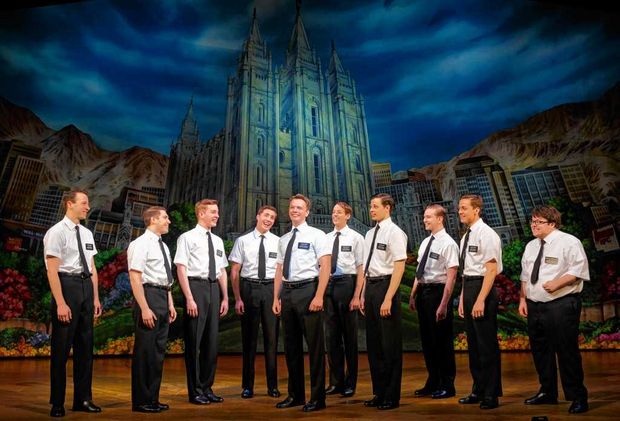
How the LDS Church Recycled a Parody Into a Marketing Tool
- By Alison Lesley --
- 28 Nov 2014 --
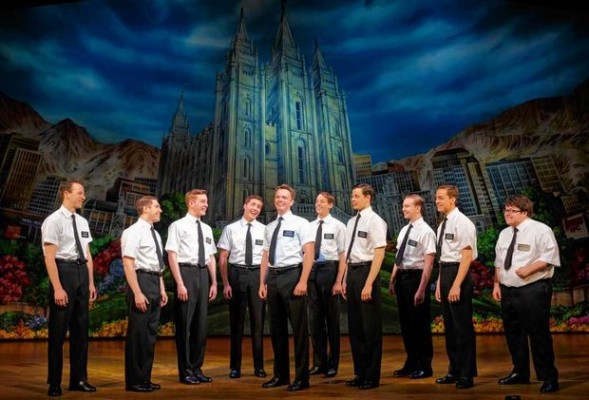
The Book of Mormon Broadway musical mocks the Mormon Church, but they used it to their advantage and increased their membership across the U.S.
The Book of Mormon is a musical by the creators of South Park that satirizes anything Mormon-related. The story follows two happy-go-lucky Mormon missionaries on their journey to Africa. The play makes jokes about their demeanor, and the religion’s origin story. However, the Church of Latter-Day Saints responded shockingly well, stating “The production may attempt to entertain audiences for an evening, but the Book of Mormon as a volume of scripture will change people’s lives forever by bringing them closer to Christ.” They simply sent their missionaries over to speak to the audience.
#Hello #WorldHelloDay. Would you like to change religions, we have a free book written by Jesus! pic.twitter.com/ShyXLPrnUG
— Book of Mormon LDN (@bookofmormonldn) November 21, 2014
Rocky Spiker, or Elder Spiker, and his fellow missionaries put together a campaign. They dressed up in suits and ties, collected a stack of the Book of Mormon and printed up cards offering free copies to hand out at the performance through to Saturday. They intended to end the week on Sunday with an open house event. They even brought along a cardboard cut-out for the audience members to pose and take pictures with.
They have succeeded in broadening their membership across the U.S., as other Mormon missionaries stage similar campaigns outside of the Book of Mormon theaters. The play is often sold out, and they give out hundreds of copies of the Book. Many others have researched and looked deeper into the religion as a result of the play.
Book of Mormon: Well-Balanced according to Mormon Community
Seth Merril, a ward mission leader for the CLD, believes there is little real ‘harm’ in the play. He said, “We just want to share our message. And here was a group of people at least talking about the Book of Mormon….The play may spread some misconceptions, but it also makes people curious about what Mormonism is really about. It’s balanced.”








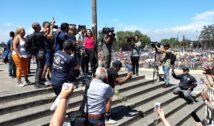
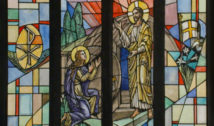
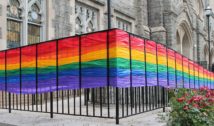









9 comments
Alison Lesley
10:00 amjust shows that few things can be done to us that we cant use to our advantage
Alison Lesley
10:00 amThe level of sheer vulgarity should be alarming to all people, unless of course you believe that profane epithets, sexual innuendo, biological bodily humor and cultural and racial stereotypes should be celebrated. I remember being very disappointed and concerned when an elementary school teacher I met around 1998 was a fan of “South Park”. Not the teacher I want of my children…The same makers, Matt Parker and Tre Stone, are the creators of all this filth. Hey, some people like entertainment with a sleazy coating. Too bad. We as a society have accepted too much junk–entertainment and food.
Alison Lesley
10:00 amI think it mocks Africans generally worse than Mormons. Tre Parker and Matt Stone
DutchAmsterdam">Alison Lesley
10:00 amUnfortunately, the printed version of the Book of Mormon doesn’t live up to its billing. It doesn’t survive scrutiny of how it came into existence, of why it includes content plagiarized from the Bible, of how it yet contradicts the Bible, of why it plays havoc with the doctrines of the Mormon Church, and so on.
Sure, clever marketing draws a lot of people in. But reality causes just as many people to leave the LDS.
Alison Lesley
10:00 amMany things once thought to be anachronisms are turning out to be authentic pre-Columbian features mentioned in the Book of Mormon such as horses, pigs, barley, cement, cattle, elephants, writing on metal plates, head plates and body armor and scimitars, silk. Other features of the Book of Mormon are also being confirmed such as Hebraisms, chiasmus, correct details of the incense trail including the correct location of Nahom and Bountiful, metalworking and steel swords, authentic names, various customs, methods of warfare, demographics and population studies, and more. These were not known in Joseph Smiths day. He could not have fabricated them and happen to just guess right. Yet the Book of Mormon gets these and other details correct.
Critics consistently take LDS history out of context and present their version as fact when it is really a distorted view of Mormonism. The record of those trying to “prove” the LDS church false is a dismal one. All of their arguments continue to fall by the wayside as new evidence continues to be found supporting many details of the Book of Mormon’s accuracy and supporting other LDS doctrines and practices. The critics still use the old outdated arguments and get a lot of mileage out of them because people don’t know better. Examples are easy to find and could be shared.
Alison Lesley
10:00 amThere is a growing body of evidence from New World archaeology that supports the Book of Mormon. Dr. John Clark of the New World Archaeological Foundation has compiled a list of sixty items mentioned in the Book of Mormon. The list includes items such as “steel swords,” “barley,” “cement,” “thrones,” and literacy.
In 1842, only eight (or 13.3%) of those sixty items were confirmed by archaeological evidence. Thus, in the mid-nineteenth century, archaeology did not generally support the claims made by the Book of Mormon. By 2005 forty-five of those sixty items (75%) have been confirmed. Therefore, as things stand at the moment, current New World archaeological evidence tends to verify the claims made by the Book of Mormon. (John Clark, “Debating the Foundations of Mormonism: Archaeology and the Book of Mormon”, presentation at the 2005 FAIR Apologetics Conference (August 2005). Co-presenters, Wade Ardern and Matthew Roper. S. Kent Brown, “New Light: ‘The Place That Was Called Nahom”: New Light from Ancient Yemen,” Journal of Book of Mormon Studies 8, no. 1 (1999): 66-68.)
After 60 years of research Mesoamerican archeologist, John Sorenson has published his “Mormon Codex” showing 420 details that match up between the Book of Mormon and features of geography, language, and culture in Guatemala and Southern Mexico. Since these details were not known by science or scholars in 1830 when the Book of Mormon was published, how did that book get so many things right? Because it is true. It’s the only way it could get that many details right which were unknown in Joseph Smith’s day.
Alison Lesley
10:00 amFirst of all, the New World Archaeological Foundation is operated by Brigham Young University. This organization might be a bit biased. I tried doing a Google search for the steel ancient American swords that you speak of. Can you give a better reference so that I can take a better look? The Book of Mormon speaks of epic battles with around a half million people fighting with steel swords. Wouldn’t you expect to find significant remnants from this? I would expect that steel smelting on this scale would be impossible to miss. Notice that I specifically mention steel smelting and not the smelting of other metals. Where are the signs of steel production that would account for the epic battles that the Book of Mormon mentions?
Alison Lesley
10:00 amThe Book of Mormon contains 433 verses from the Book of Isaiah – a small very small percentage of the book. The Book of Mormon openly explains that Isaiah is being quoted. So, it is no secret that the Book of Mormon quotes the Bible. It says so.
Out of these 433 verses 234 of them have wording that varies somewhat from the KJV version of the Bible. It turns out that these verses which vary from the King James wording match up well with the same verses in the Dead Sea Scrolls. This Dead Sea Scroll Isaiah dates about 1200 years earlier than the documents available to the King James translators and wasn’t discovered until 1945. Since the Book of Mormon Isaiah from a 600 BC copy of Isaish published in 1830 matches the Dead Sea Scroll Isaiah then there is no way anyone in 1830 could have copied those verses from any Bible available at that time. The Dead Sea Scroll Isaiah wasn’t yet discovered. This is a great evidence of the authenticity of the Book of Mormon.
The Book of Mormon gets it right again!
Alison Lesley
10:00 amWhat are 1769 King James Version edition errors doing in the Book of Mormon? Errors which are unique
to the 1769 edition that Joseph Smith owned?
When King James translators were translating the KJV Bible between 1604 and 1611, they would occasionally put in their own words into the text to make the English more readable. We know exactly what these words are because they’re italicized in the KJV Bible. What are these 17th century italicized words doing in the Book of Mormon? Word for word? What does this say about the Book of Mormon being an ancient record?
One example, 2 Nephi 19:1, dated in the Book of Mormon to be around 550 BC, quotes nearly verbatim from the 1611 AD translation of Isaiah 9:1 KJV – including the translators’ italicized words. Additionally, Joseph qualified the sea as the Red Sea. The problem with this is that (a) Christ quoted Isaiah in Matt. 4:14-15 and did not mention the Red Sea, (b) “Red” sea is not found in any source manuscripts, and (c) the Red Sea is 250 miles away.
In the above example, the KJV translators added 7 italicized words not found in the source Hebrew manuscripts to its English translation.
Why does the Book of Mormon, completed 1,200 years prior, contain the exact identical seven italicized words of 17th century translators?
The Book of Mormon includes mistranslated biblical passages
that were later changed in Joseph Smith’s translation of the Bible. These Book of Mormon verses should match the inspired JST version instead of the incorrect KJV version that Joseph later fixed. A typical example of the differences between the BOM, the KJV, and the JST:
3 Nephi 13:25-27:
25: …Therefore I say unto you, take no thought for your life, what ye shall eat, or what ye shall drink; nor yet for your body, what ye shall put on. Is not the life more than meat, and the body than raiment?
26: Behold the fowls of the air, for they sow not, neither do they reap nor gather into barns; yet your heavenly Father feedeth them. Are ye not much better than they?
27: Which of you by taking thought can add one cubit unto his stature?
Matthew 6:25-27 (from the King James Version Bible – not the JST):
25: Therefore I say unto you, Take no thought for your life, what ye shall eat, or what ye shall drink; nor yet for your body, what ye shall put on. Is not the life more than meat, and the body than raiment?
26: Behold the fowls of the air: for they sow not, neither do they reap, nor gather into barns; yet your heavenly Father feedeth them. Are ye not much better than they?
27: Which of you by taking thought can add one cubit unto his stature?
Joseph Smith Translation of the same passages in the LDS Bible for Matthew 6:25-27:
25: And, again, I say unto you, Go ye into the world, and care not for the world: for the world will hate you, and will persecute you, and will turn you out of their synagogues. 26: Nevertheless, ye shall go forth from house to house, teaching the people; and I will go before you.
27: And your heavenly Father will provide for you, whatsoever things ye need for food, what ye shall eat; and for raiment, what ye shall wear or put on.